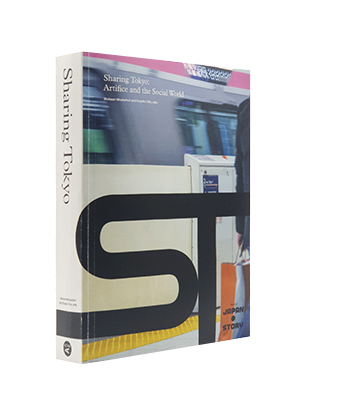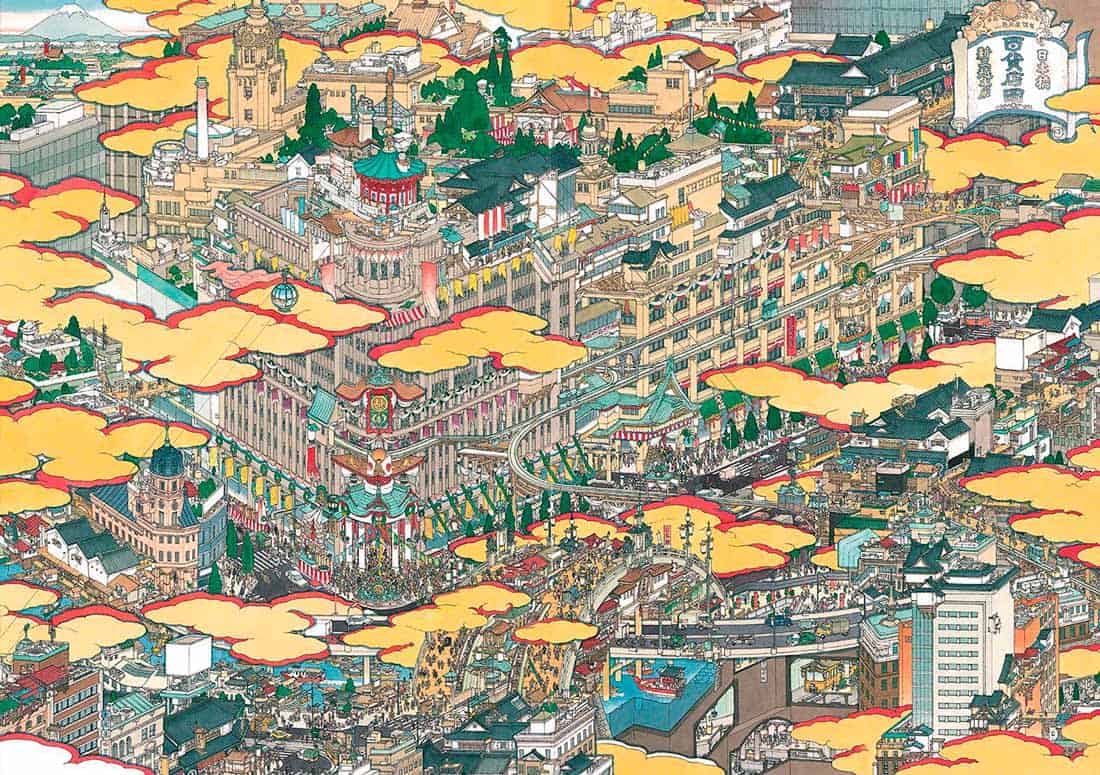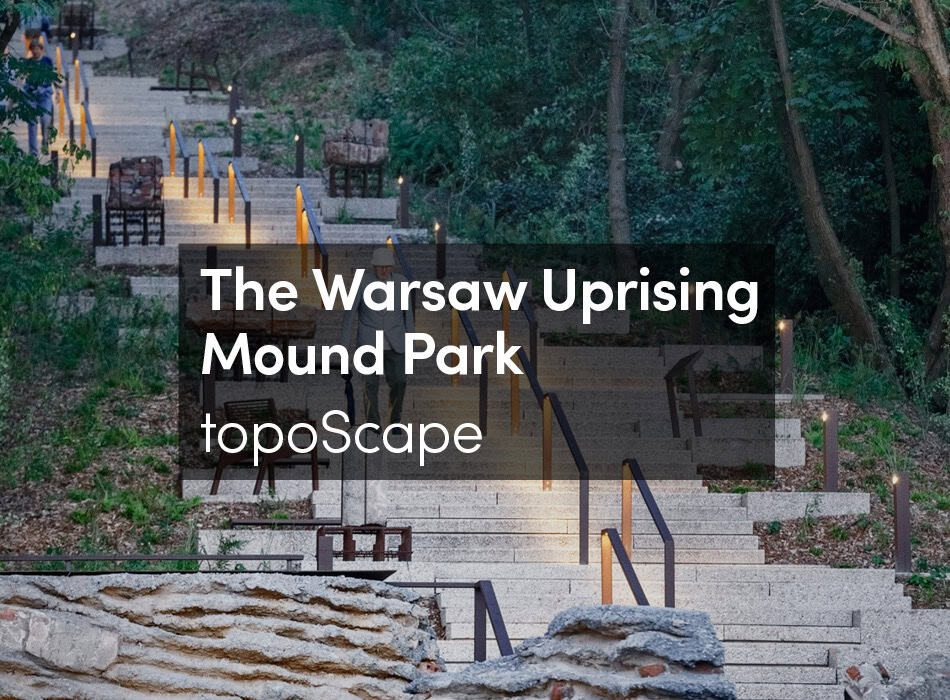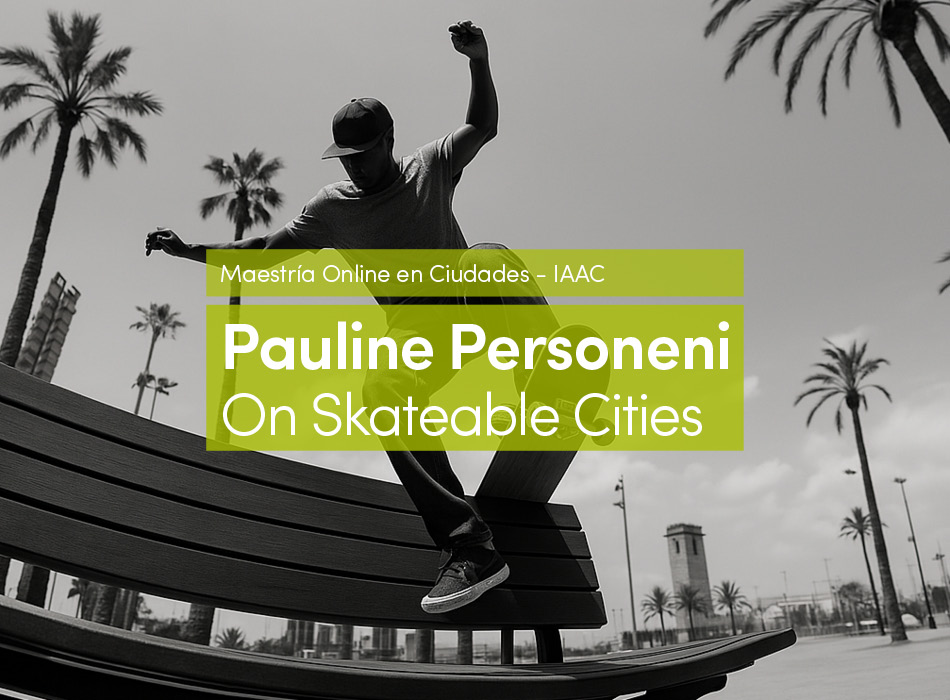The concept of “sharing” in the title Sharing Tokyo: Artifice and the Social World, edited by Mohsen Mostafavi and Kayoko Ota, is incorporated in its structure, with no less than 22 contributors to its argument. Most of these are architects presently practicing in Tokyo, several of whom have been the subject of Ota’s lectures from the past decade or so; but there is also a 100-page photo documentation of contemporary Tokyo by Kenta Hasegawa as well as essays and interviews from several disciplines and helpful analytic studies from the Japan Research Initiative run by Mostafavi at the GSD, Harvard. At a time when architecture, and the practice of urban transformation generally, is undertaking a revaluation of its paradigms and themes, Tokyo offers an important vehicle for research; and this ambitious book will be a significant resource for thinking creatively about that revaluation. Here, we will follow a trajectory through progressively more intimate scales of endeavor.
As Mostafavi’s “Introduction” (pp. 7-12) makes clear, “sharing” is a vehicle for reformulating what is meant by the vexed generalization “public space”. One of the most important insights in this regard appears in a footnote to Hiroto Kobayashi’s essay, “Revitalizing the Community of the Cho”. Where Western theory tends to treat public and private as “oppositional, dualistic…[i]n Japan ‘public’ and ‘private’ are treated as poles of a gradational relationship, with ‘shared’ relations residing along the spectrum between them’ (p. 269). Indeed, if one takes the Chicago School’s distinction between the public and the crowd to mark a distinction between political involvement and anonymous absorption into an aggregate of individuals, it is evident that “politics” begins whenever two people need to interact. From that minimum condition, there are manifold forms of association both informal and formal before one needs to consider truly anonymous crowds, like the ones found in transport hubs (which are prominent nodes in the elaborate apparatus of mass transport characteristic of Japanese cities). In other words, very little of a city is truly private, and one is dominantly concerned with modulations or gradations of public life.
“Sharing” is also an aspect of Mostafavi’s concern with “agonistics” (interview with Homi Bhabha, pp. 413-417), placing emphasis upon mutual commitment. The original scope of agon ranged from athletic contests through political and legal debate to temple sacrifices, tragedy and philosophical dialogue, eliciting a play between human vicissitudes and cosmic conditions. The rich analogic universe of the agon is still central to the situations comprising the spectrum of public life as they are played out in narrative, history, myth, propaganda, lies, delusions, hopes, even if in a much more diffuse manner than in the compact polis (or in pre-modern Edo). For example, the well-known painting by Yamaguchi Akira, Department Store New Nihonbashi Mitsukoshi (2004) depicts a “myth” of Tokyo by wittily fusing contemporary manga illustration with the rakuchū rakugai-zu (grand view inside and outside Kyoto) panoramic isometric imported from China in the Muromachi Period, as if to suggest that the authority of the Tokugawa shogunate had metamorphosed into the capitalism of the Mitsui Group (along the way restoring the traditional center of Tokyo from which Mount Fuji could be seen – upper left – by proposing a gigantic version of the Edo period Nihonbashi wooden rainbow bridge that would span both the 1911 stone bridge and the 1964 highway overpass).
Yamaguchi Akira Department Store New Nihonbashi Mitsukoshi 2004 fron 2014 FutureGreats
Agon also exhibits a spectrum – from conflict to negotiation to accommodation to collaboration – and any particular situation is likely to exhibit the full range, moving in either direction, perhaps several times. This implies that a “good” city (and its stories) will always accommodate a certain amount of violence, somewhat after the manner in which humans need exposure to disease in order to be healthy. Similarly, “sharing” does not necessarily mandate direct involvement; the opposite – discrete distance, allowing people their freedom – is often most appropriate (tables keep to themselves in a restaurant; neighbors in a Tokyo alley develop complex protocols of nearness and distance with each other).
However, if the overall ambition of “sharing” is to identify the nature of an urban topography that is common to all, enabling commitment or rejection to be recognized communally, the embodying conditions are distributed deep into what we too often generalize as “context” or “ecosystem” or the “urban fabric” (I have no idea what “urban form” is) but which in fact comprises an articulate, differentiated continuum of mutually informing claims and affordances. The difference between a wealthy and a poor section of a city (or between yamanote and shitamachi, in Tokyo) is comprehensive, manifest in the quality of the buildings and their materials, in the furnishings and the products in shops, in accents, manners and diets, etc. Even if Tokyo reputedly favors change and transience over permanence, the concrete temporalities of situational involvements are as rich as anywhere else, where ephemera resonate obscurely with tradition. Moreover, these deep topographies do not thrive like a machine, where every element contributes to a single beneficent outcome, but with conflict, violence, partial understanding, predation and ugliness alongside peaceful collaboration, profound insight, care and beauty.
Accordingly, fundamental to the paradigm shift represented by Sharing Tokyo is a turning away from top-down generalizations like “space”, “time”, “form”, etc. for the sake of commitment to a proper bottom-up understanding of the concreteness of urban topographies, and, following that, the displacement of the architect from a professional creator of spatial systems executed by technology on behalf of a client controlling the requisite funds to a fellow citizen collaborating with local institutions on the long-term, incremental maturation of a locale. Styles of analysis embrace those of anthropology, ethnography and politics, as well as the familiar representations of architecture and urban topography, with annotated drawings and simulations becoming important for communication among stakeholders. This shift corresponds to a conflict and reciprocity between the hegemony of bureaucratic capitalism (the coordination of political office with large corporations) and the comparatively disenfranchised expanses of Tokyo comprising residences, local enterprises, and so forth. In the literature, this often comes down to a contest between high-rise towers on their podia together with massive infrastructure systems, on the one hand, and, on the other, the ethos of the alley (a consequence of Tokyo’s block structure – see Hiroto Kobayashi’s chapter, as above – bearing similarities to the interior of the European urban block).
The podium and high-rise represent the absorption of early modern political and social ideals into bureaucratic capitalism, whose ethos Jouji Kurumado summarizes as “cities […] turning into industrial products […]. Large-scale developments today have no use for uniqueness in their buildings […] ensuring compatibility through uniformity, [like] the same operating system on everyone’s computer […], indifferent to context” (“Evaluating Development Projects in the Long Term”, p. 189). In response, Sharing Tokyo concentrates on strategies by which these autonomous configurations could be reconciled with the complexity of urban life, and the JRI Team provides a good analysis of the problems and possibilities of the genre under the rubric of “Models of Aggregation” (pp. 192-223). A turn toward social inclusiveness is observed in SOM’s Tokyo Midtown project (pp. 158-183), developed by the Mitsui Group, the subject of Yamaguchi Akira’s painting. More ambitious spatially and more subtly connected to the local street pattern (even reopening a canal) is the fully three-dimensional topography of Shibuya Stream by Coelacanth (pp. 372-385). The European urban block typically has an enduring formal exterior and a more informal interior, open to variation socially, functionally and temporally, an arrangement which these strategies for Tokyo effectively turn inside out. This could reflect an anticipation that Tokyo’s high-rise developments will be less prone to short-term destruction and replacement than they have been in the past.
At present, the life around Shinjuku does not extend as deeply into the surrounding topography as does that around Shibuya (whose continued development, however, is driven by potential profits rather than by political or social motives). Both areas are surrounded by a type of mid-height assemblage of eight- to 10-story buildings that is ubiquitous in central Tokyo, and it is possible to see how the intelligent interventions of the Mostafavi GSD studios (pp. 398-409) might lead to a consolidation of clusters of such blocks with a collective ethos. This work is significant for addressing the gap in the debates regarding what lies between the anonymity of the large-scale developments (with their generalizations, statistics, systems) and the intimacy of the alley (where the agonic metabolism is concrete, alive, replete with poetic resonance). Something similar could be said of Yoshihiko Oshima’s project to rescue four “suburban” danchi housing slabs from alienation by conceiving them as a part of a larger residential neighborhood, incorporating a communal vegetable garden and facilities for childcare and senior care (pp. 329-335).
Discovering new forms of continuity-in-difference is the main topic of Sharing Tokyo, a subtle problem calling for any innovation to preserve or renew what Jordan Sand called a “vernacular” (Tokyo Vernacular, 2013) – in fact a full urban culture. Indeed, the phenomenon has attracted more than a century of scholarly and participatory research (e.g., Mayumi Mori, “Initiatives in Yanesen”, pp. 270-291), exhibitions, publications, demonstrations and experiments, as well as museumification, co-option by authorities, and exploitation for nationalistic or capitalistic purposes. Characteristically embodied in customs, artistic and literary themes, furnishings and implements of daily use (terms like “everyday” and “ordinary” regularly appear), the phenomenon does not have a single name. It is least clear as a contemporary urban configuration: the Shitamachi Museum, 1980, reconstructs part of an alley; the JRI Team provides “Neighborhood Elements”, (pp. 292-301); and everyone finds themselves “Inventing Neighborhood in Tokyo” (Sand, pp. 230-245).
The present trends of immigration from the countryside to the major cities – though both Tokyo and Osaka report thousands of empty houses – and of the migration of the city’s population from Western Tokyo toward the center (pp. 118-119), mean that the principal arena of practical transformation and consolidation has become the north and east shitamachi quadrants of the city (Shin Aiba, pp. 128-129). Emblematic of the main topic of Sharing Tokyo – the transaction of large-scale systems with “neighborhoods” – is the metamorphosis of the first into the second in the project to weave the two kilometers of disused Odakyu railway line into the prevailing fabric of Shimokitazawa (both sides of which, of course, had turned their backs to railway line), called “Greenline Shimokitazawa” (Masami Kobayashi, pp. 280-291). Shimokitazawa is endowed with a rich “neighborhood” character, with lively shotengai (shopping streets), theaters, music venues and fashion, and therefore notionally propitious for creative renewal. However the 20 years of seminars, presentations, workshops, consultations and exchanges with Setagaya Municipality illustrate how collective urban transformation is as much embodied in legal issues, quality of communication, changes of participants, patience and negotiating skills, and even luck, as it is in technical issues, planning opportunities and (competing) visions of “neighborhood”. Such projects require a shift in the role of the architect from pure designer to enabler, with the ability to orchestrate the frameworks by which the several kinds of participants are empowered to create the common ground to which all can be committed, and in history. Tsubame Architects, whose project is part of the renewal of the abandoned Odakyu rail line in Shimokitazawa (pp. 304-317), call attention to this enabling role (diagram, p. 317) and also present a cross section of the scheme (pp. 312-313) that effectively fuses construction details with political choice by indicating the sites of adaptation by future inhabitants.
At the most local or intimate levels of involvement, the examples of adaptive reuse by Hagi Studios, particularly Tryori Bake with its communal room, are intelligent; and Mitsuyoshi Miyazaki’s notion of an archipelago, or network, of such interventions is important for showing that structures of local sharing need not rely on a monumental center but can be quite open, indeed echoing the relatedness of significant clusters in Tokyo as a whole (pp. 319-327). Similarly well-judged, even witty, are the examples of adaptive reuse by Jo Nagasaka of Schemata Architects, the ground floor of whose office and Koganeyu Bathhouse call attention to the significance of institutions such as clubs, associations and religious buildings for mediating between the individual and one’s local area (pp. 362-371). Erika Nakagawa’s A Neighborhood in a House (pp. 386-397), a five-story residential insertion in an alley of wooden houses (with one face addressing a major throughway), evokes the concreteness of bottom-up thinking at its most intense. A model at what appears to be a scale of about 1:3 enables her to include furniture, plants, clothes, umbrellas, wall clocks, waste baskets and calendars. The stair is treated as a kind of vertical alley, ornamented with plants, signifying both communal welcome and an expectation of respect; and the “façade” carries a faux ad hoc installation of electrical conduits and plumbing, characteristic of the adaptations of alley residents. With ethnographic care the model represents the contemporary circumstances of “ordinary” and “everyday”, whose decorum eschews the semi-ritual character familiar from illustrations of traditional Japanese domestic life. As much as she has subtly adjusted the views from each dwelling according to its height, the views of each dwelling create domestic theaters that radically compress distinctions between “private” and “public”.
Metropolitan Tokyo’s 44 million inhabitants represent about 1/3 of the population of Japan and 2/3 of the populations of France or the UK, which are distributed across much wider and more diverse territories than Tokyo. Such a vast urban organism necessarily nucleates in a more or less emergent fashion, where, for example, transport hubs attract a web of shopping streets. Some of these will, like Shibuya, have a major presence in the city, generating sub-enclaves; others will be well known but more local, like Shimokitazawa. However, in terms of the spectrum between crowd and public, between the extremes of the transport system (e.g., the highways commemorated by Tarkovsky in Solaris) and the micro-communities constituted around one room, there is – beyond the motifs of center that gravitate about the Western agora, piazza or plaza – a variety of urban configurations that can generate enough mutual support to animate an urban locale. To the extent this is left to market forces, the result will be a topography of needs and desires – the city as service-provider – or of sophisticated financial manipulation. Sharing Tokyo seeks to discover types of urban metabolism that might promote modes of collective life capable of transcending necessity and pleasure – and their capacity for exploitation – such that commitment to the common (shared) ground grants the political empowerment that sets the horizon for creative, profound arts and speculation. From this would come the wisdom to orient ourselves with respect to the fundamental conditions better than we have recently. This is not a problem unique to Tokyo, but Tokyo offers unique insights into the making of urban cultures. The enthusiasm for, and understanding of, such a vast and intricate city by the architects and thinkers collected in Sharing Tokyo are certainly instructive with regard to asking poignant questions, and inspiring with regard to possibilities.



















